The Ambassador Hotel had many incarnations between its opening in 1921 and its demolition in 2005. It established Wilshire Boulevard as the hub of an expanding Los Angeles, and its Cocoanut Grove nightclub served as a playground for the rich, famous, and influential, including America’s biggest film stars. The venue also hosted six Academy Awards ceremonies between 1930 and 1943 in its Fiesta Room. In 1968 however, the Ambassador Hotel made headlines as the site of Robert F. Kennedy’s assassination, a trauma from which it never fully recovered. In the 2000s, after a battle over the fate of the historic building, the site became the Robert F. Kennedy Community Schools. This $578 million construction project made it the most expensive American public school ever built.


Images: (left) The Ambassador Hotel from the southeast, early to mid-20th century. Getty Images, photo: Dick Whittington Studio/Corbis; (right) Robert F. Kennedy Community Schools. Photo by Joshua White, JWPictures/©Academy Museum Foundation
When the Ambassador Hotel opened on New Year’s Day, 1921, Wilshire Boulevard was just a dirt road lined by bean and barley fields, but the Wilshire corridor would soon become a primary east-west thoroughfare. Much more than a hotel, the Ambassador was instrumental in expanding this hub of Los Angeles. In its heyday, it was a sprawling, 1,200-room entertainment complex that boasted 37 shops, a golf course, a bowling alley, and the 1,000-seat Cocoanut Grove nightclub.
The venue was designed by architect Myron Hunt, who also designed the Rose Bowl and the Huntington Library. Hunt deployed a Moorish Revival and Art Deco style. The Grove featured Mediterranean arches, a waterfall cascading down the back wall, a midnight blue ceiling with a sparkling star, and mechanical monkeys hanging off of the papier-mâché palm trees from Rudolph Valentino’s The Sheik (USA, 1921).
The Cocoanut Grove quickly set the club standard. “Other nightclubs were like copies from nightclubs in movies,” said singer and actress Rosemary Clooney, “but the Grove was the real thing.” From the 1920s to the 1960s, the Grove was a playground for America’s biggest film stars, celebrities, and luminaries. Joan Crawford won many a dance contest there, Lionel and John Barrymore let their pet monkeys loose on the fake palm trees, and legends like Judy Garland, Ella Fitzgerald, Frank Sinatra, Louis Armstrong, The Supremes, and Nat King Cole graced the stage.
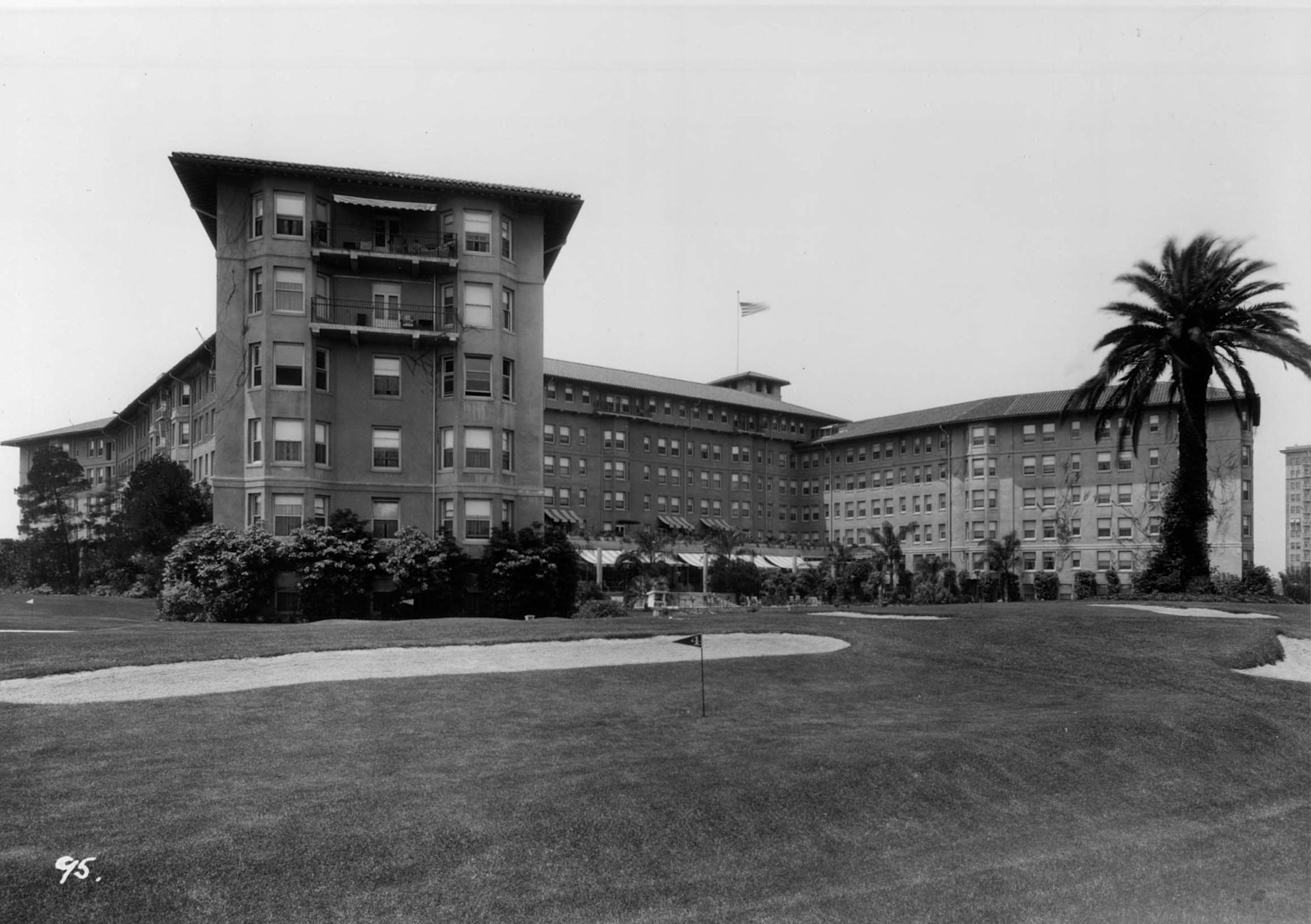
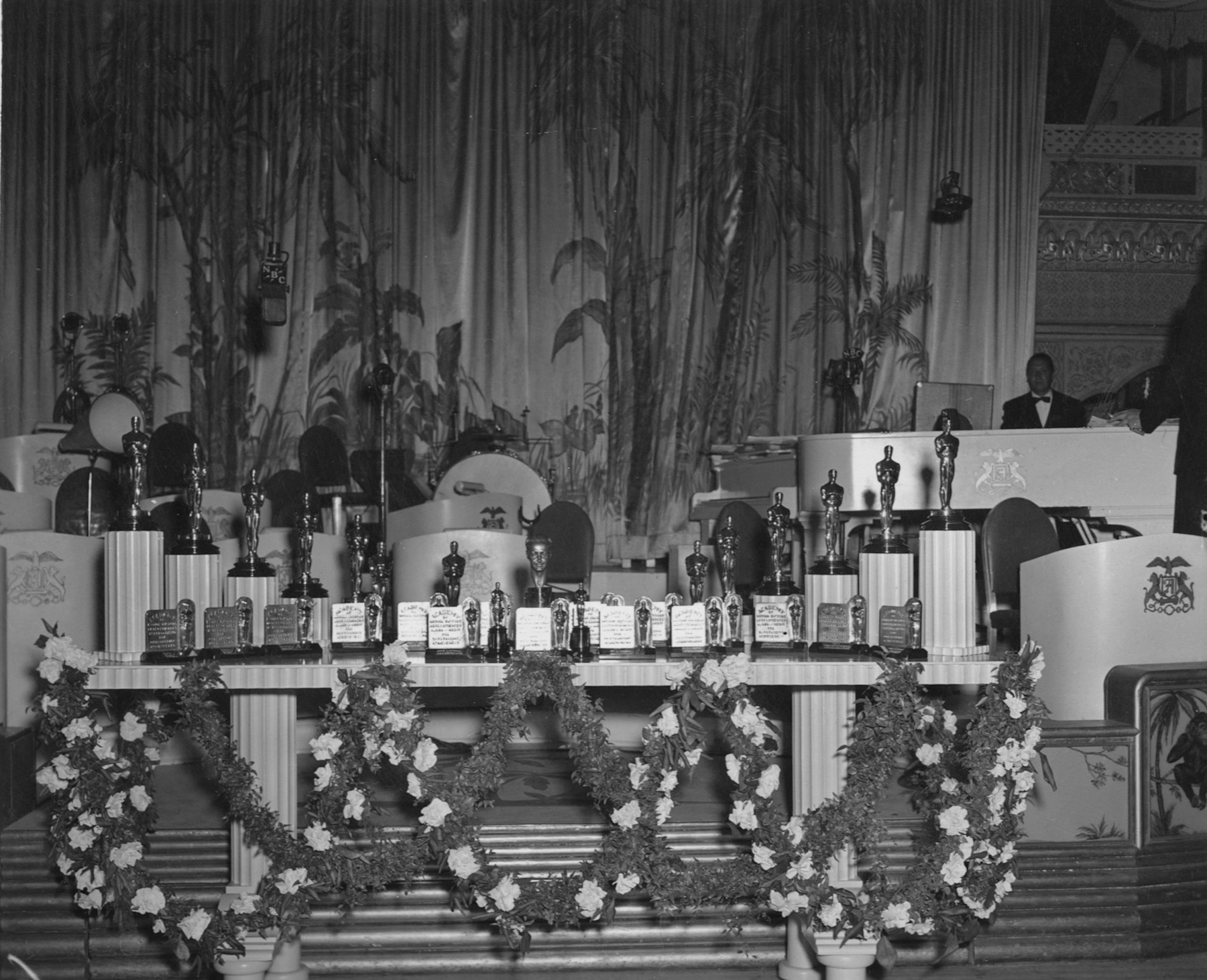
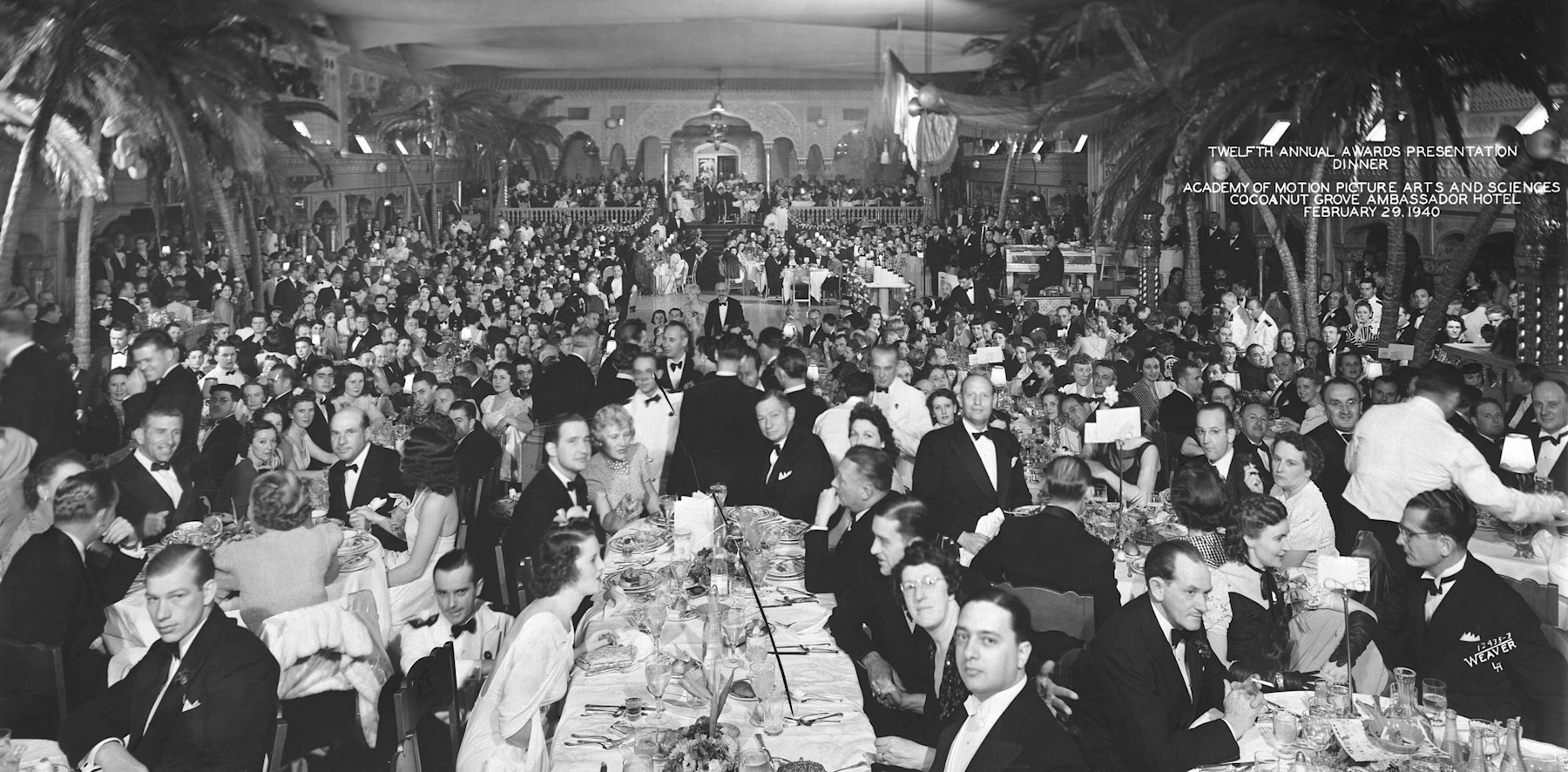
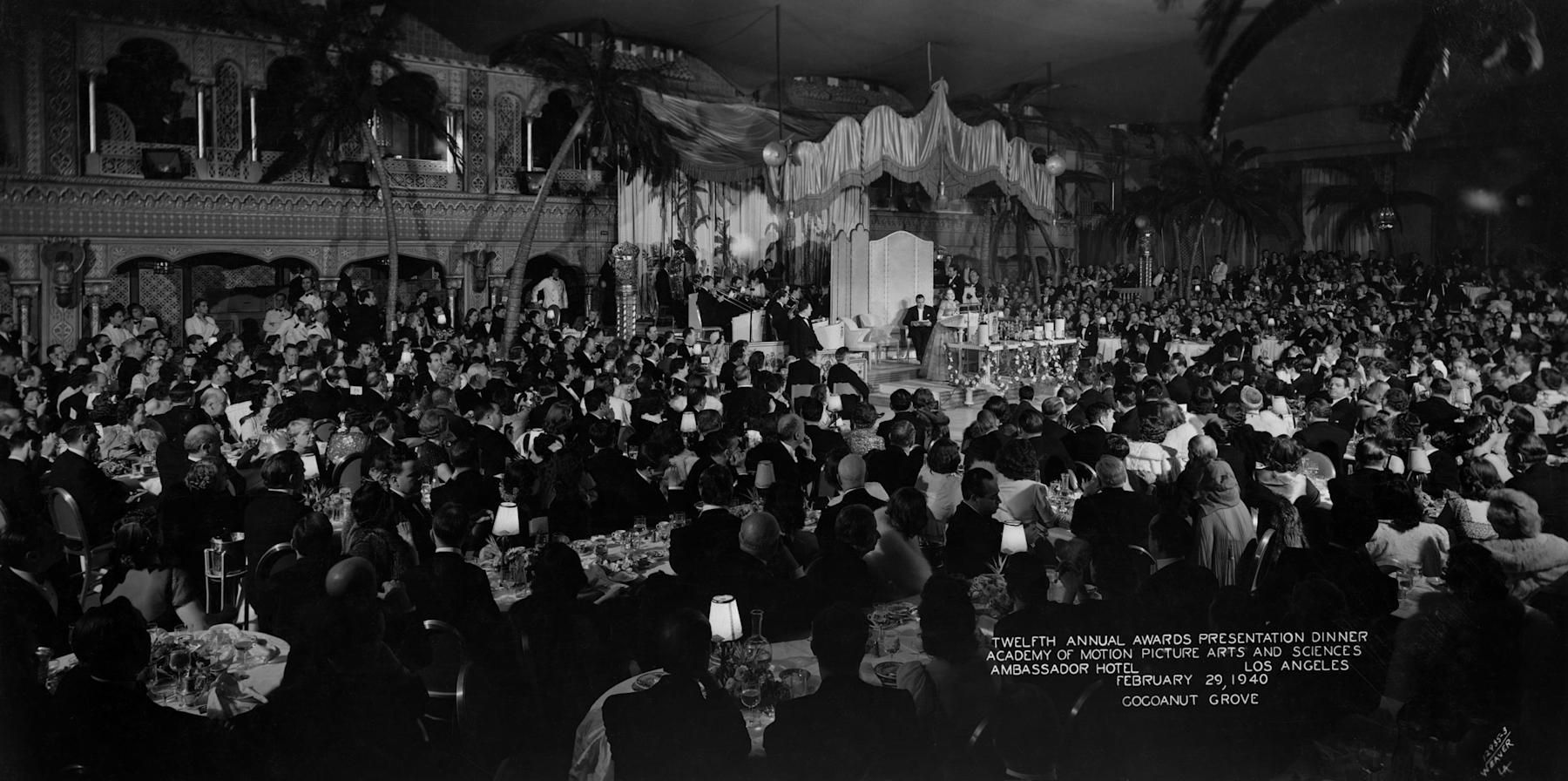
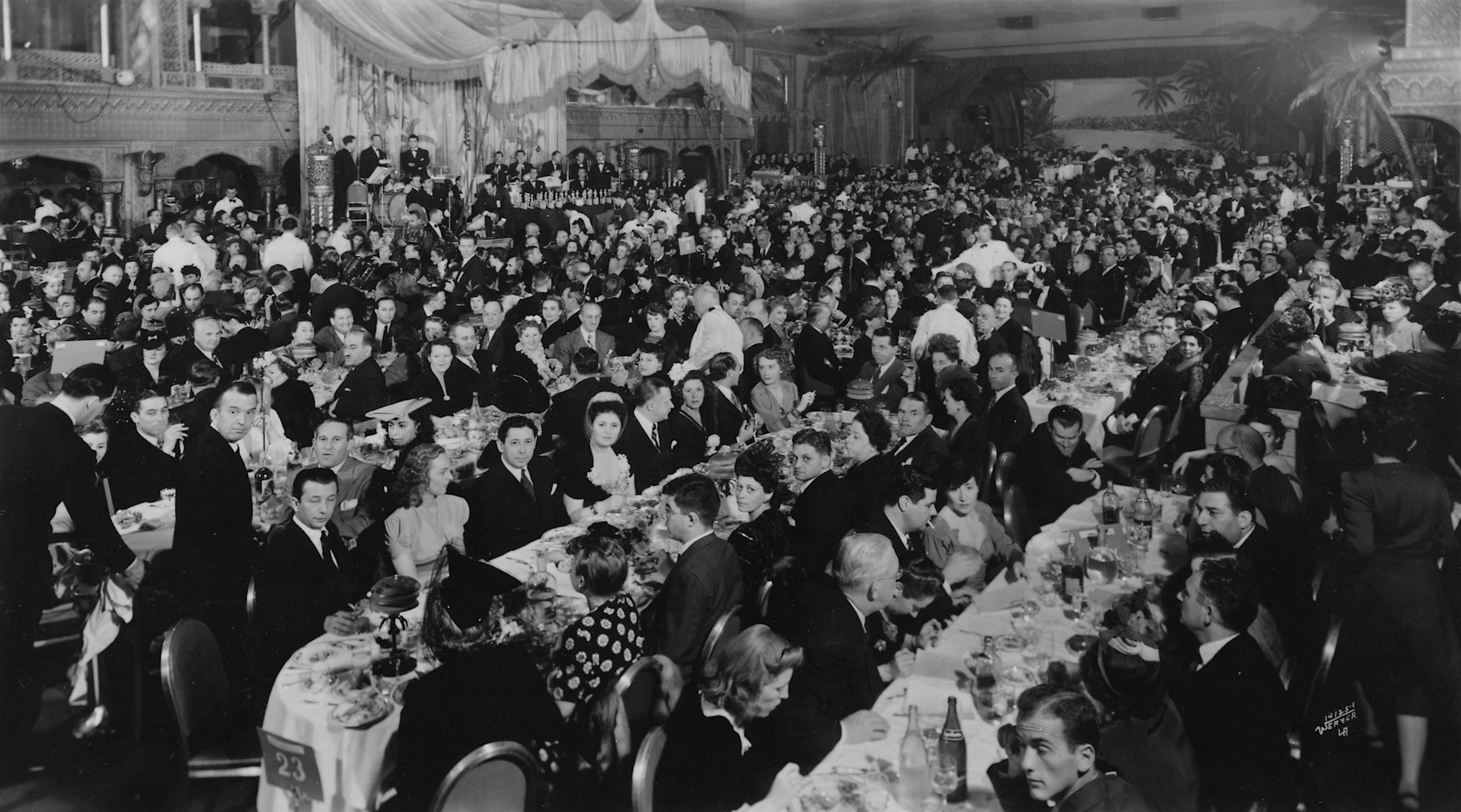
A showbiz hub, the hotel made a natural fit for the Academy Awards. While the Cocoanut Grove had an otherworldly aura, the Ambassador’s more traditional Fiesta Room was used to host six Oscar ceremonies from 1930 to 1943. During these early, pivotal years, the ceremony adopted much of the format we know today. The Academy expanded the competitive categories from 7 to 24, and the names of winners were no longer announced in advance, instead being held secret in sealed envelopes until they were dramatically opened on stage. At the 1942 ceremony, Greer Garson broke with the prevailing tradition of winners accepting their awards with a simple “thank you.” Winning the award for Best Actress for Mrs. Miniver (USA, 1942), Garson gave what is still the longest acceptance speech in Academy Awards history at five and a half minutes.
The Ambassador’s post–Academy Awards history took a grim turn in 1968, when Democratic presidential frontrunner Robert F. Kennedy was assassinated at the hotel. The tragedy signaled the beginning of the end for the venue, with interest in the hotel as a tourist destination declining dramatically. Failed attempts at makeovers included a Sammy Davis Jr. residency in the 1970s, replete with a shag carpet– and disco ball– themed renovation, but the hotel finally closed its doors in 1989. In 2001, the Los Angeles Unified School District purchased the building, setting up a battle with the Los Angeles Conservancy, which looked to preserve as much of the hotel as possible. The building was demolished in 2005, and the most expensive public school construction project in American history arose in its place, along with a park dedicated to the life and work of Robert F. Kennedy.